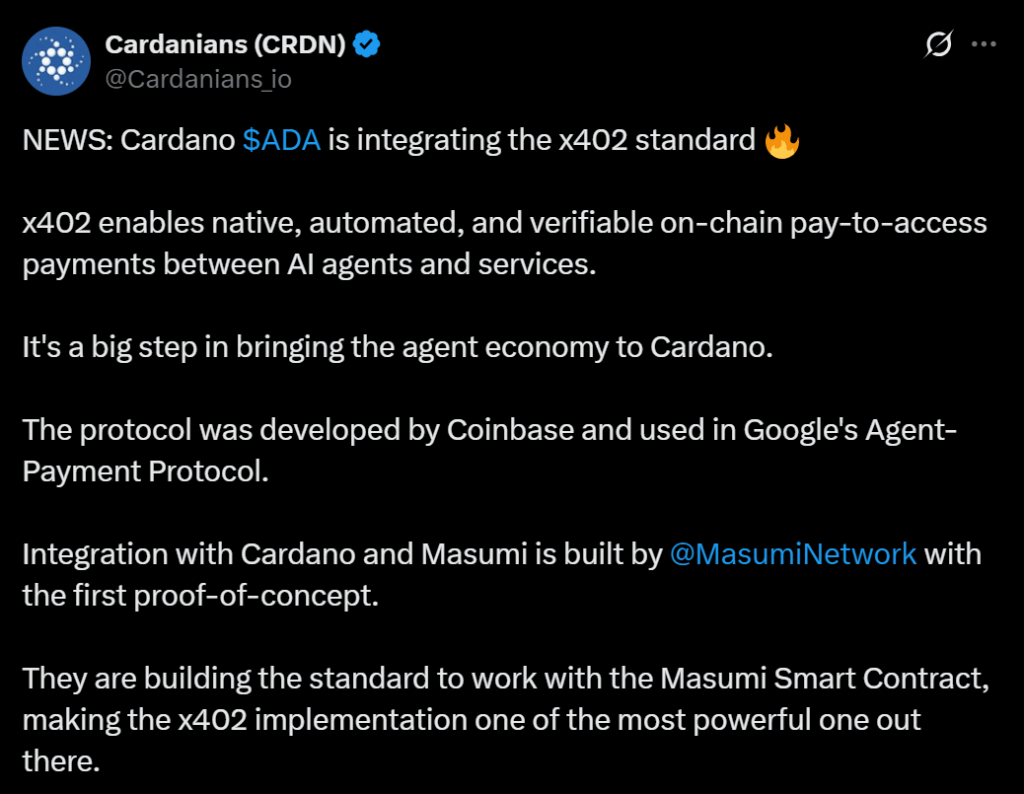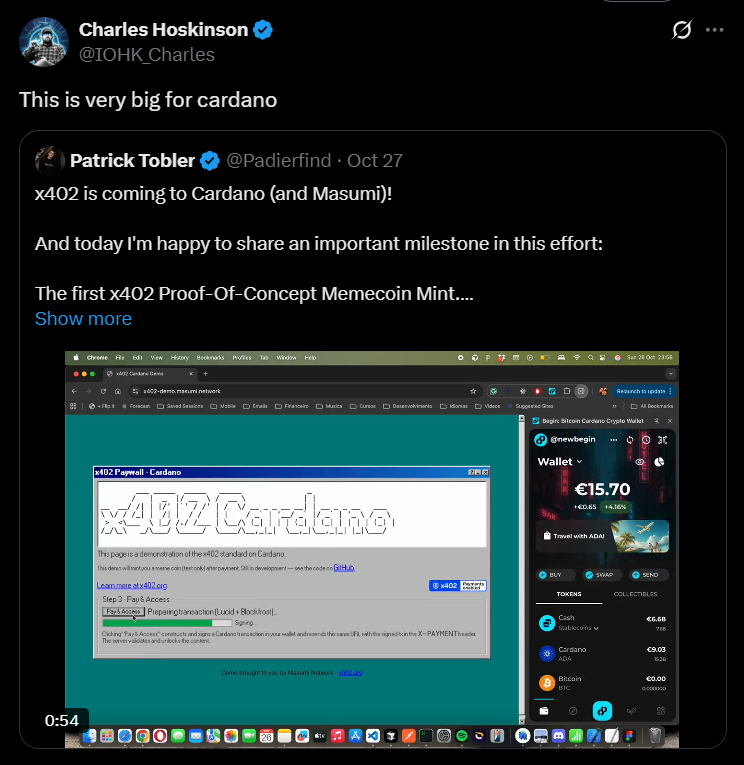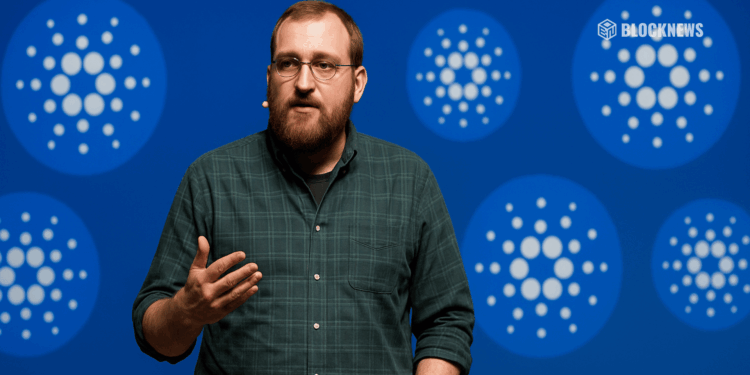• Cardano is integrating Coinbase’s x402 payment standard to enable AI-driven onchain payments using ADA and USDM.
• The upgrade could automate DeFi functions like staking and lending, boosting Cardano’s long-term utility.
• Despite slow DeFi growth, this AI-focused move positions Cardano for a major technological comeback in 2026.
Cardano has officially begun integrating Coinbase’s x402 payment standard, marking one of its biggest technical upgrades in years. This development could bridge artificial intelligence and blockchain in a new way—allowing AI agents to make onchain payments using ADA and USDM, Cardano’s native stablecoin.
The move comes from the Masumi blockchain team, which is spearheading the integration effort. According to Cardano founder Charles Hoskinson, this milestone could be a turning point for the network’s automation and smart contract functionality. “This is very big for Cardano,” he shared on X, signaling how central AI could become to Cardano’s roadmap in 2026 and beyond.

What the x402 Standard Brings
The x402 protocol is designed to let autonomous agents execute blockchain transactions without centralized oversight or manual input. In Cardano’s case, it means AI-driven systems could handle everything from token swaps to complex DeFi interactions—staking, lending, or yield farming—entirely onchain.
This integration could dramatically boost Cardano’s onchain utility, addressing one of its long-standing challenges: limited DeFi activity. By linking AI automation with blockchain payments, Cardano aims to unlock an entirely new layer of efficiency, reducing the need for human intermediaries in decentralized systems.
DeFi Still Needs Momentum
Despite its $24 billion market capitalization, Cardano’s DeFi sector remains relatively small, holding around $322 million in total value locked (TVL)—far behind Ethereum and Solana, whose TVLs stand at $164 billion and $79 billion, respectively. Even Layer 2 networks like Base and Optimism outperform Cardano in onchain liquidity.
Hoskinson has repeatedly voiced frustration about this slow progress, criticizing the Cardano Foundation for its cautious pace. In 2024, the Foundation spent $15 million promoting ecosystem growth, including a high-profile partnership with FC Barcelona, but the results have been limited. A recent community proposal added $33 million in ADA to DeFi stablecoin liquidity pools, showing that the network is still working to reignite momentum.

The Path Forward
If successful, the x402 integration could help Cardano leap forward in both automation and adoption. By enabling AI agents to handle payments and smart contracts directly, the network could become a leader in AI-powered blockchain systems. It also gives Cardano a chance to redefine its position in the DeFi space, where it has lagged competitors.
The next few months will be crucial as developers test the integration and refine its use cases. If it works as intended, Cardano’s combination of AI and blockchain could set a new standard for decentralized automation, potentially making ADA one of the most technologically advanced assets in the market.














